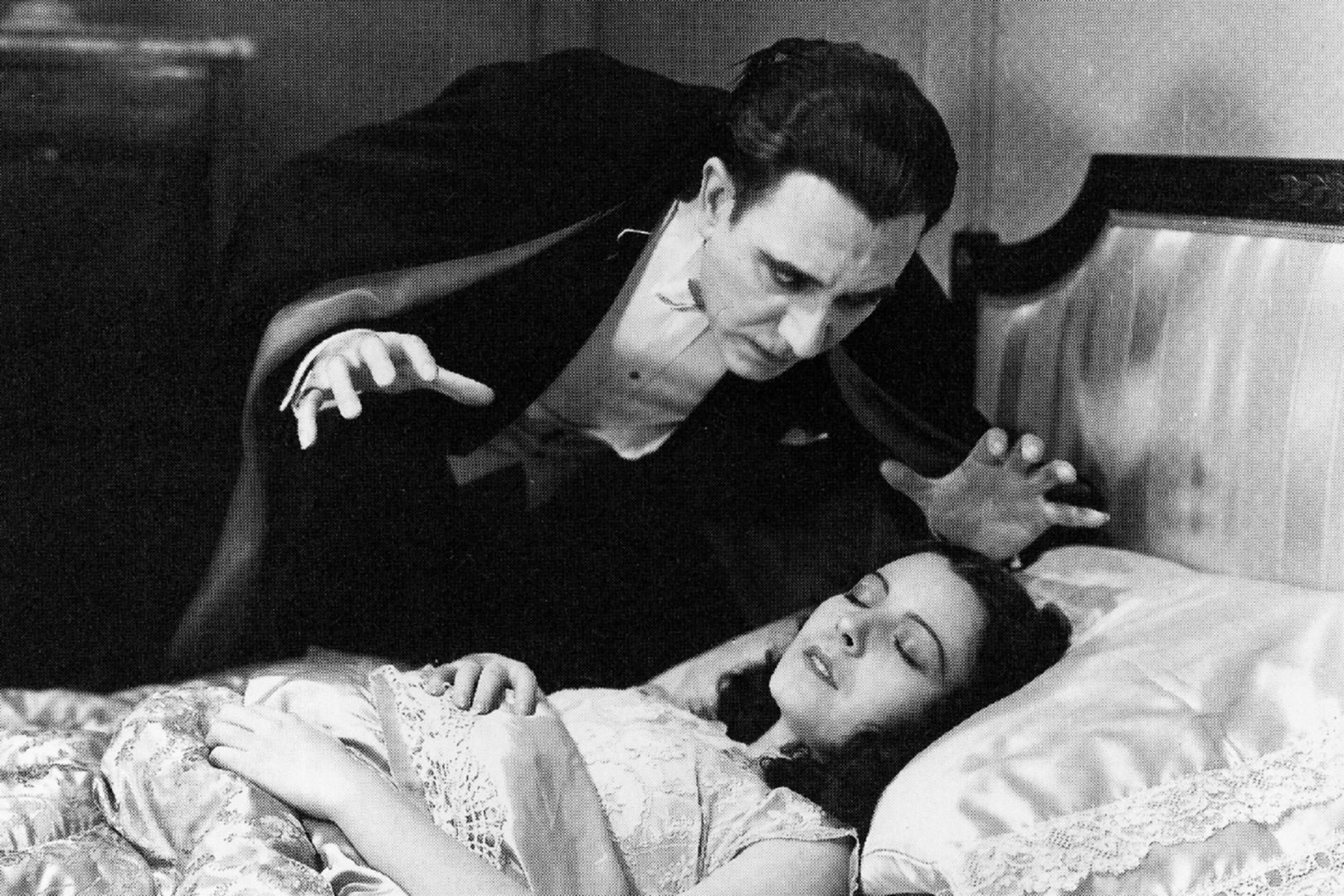
Dracula (Carlos Villarías) and Eva (Lupita Tovar) in Spanish Dracula.
Universal Studios Licensing LLC

Dracula (Carlos Villarías) and Eva (Lupita Tovar) in Spanish Dracula.
Universal Studios Licensing LLC

Universal Studios Licensing LLC
Dracula (Carlos Villarías) and Eva (Lupita Tovar) in Spanish Dracula.
Think of some of the iconic movie monsters: Frankenstein, Dracula, the Mummy, Godzilla. What do they have in common?
They certainly make great Halloween costumes, but they also share origins in scientific discoveries and the fears they inspired. Pushing the boundaries of human knowledge may be exciting, but it also creates new things to be scared of.
An exhibition at the Natural History Museum of Los Angeles County, called “Natural History of Horror,” includes props and film clips from “Frankenstein,” “Dracula,” “Creature from the Black Lagoon,” and “The Mummy,” illustrating how each film was inspired by scientific beliefs or discoveries.
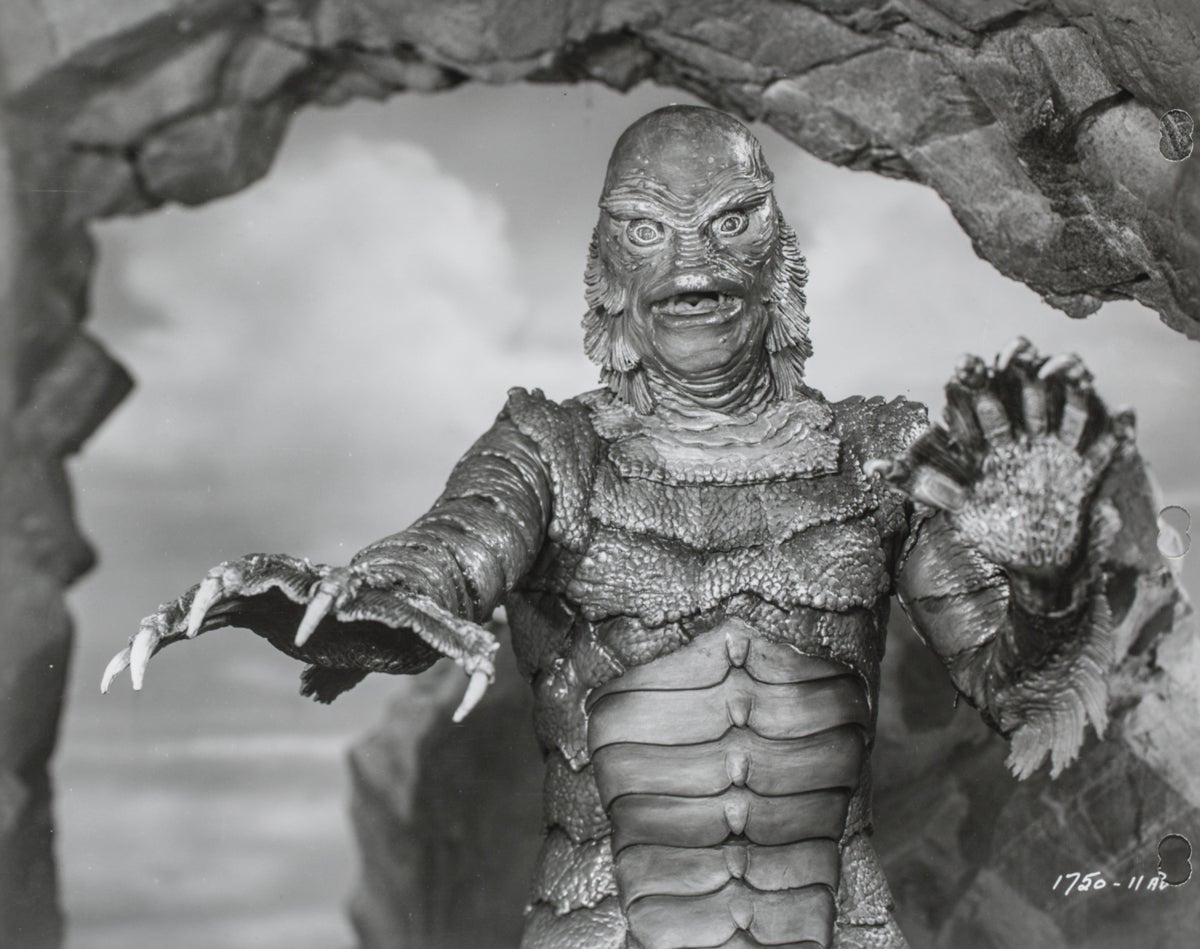
Movie still from “Creature from the Black Lagoon.” (Courtesy of Universal Studios Licensing LLC)
“Creature from the Black Lagoon,” a 1950s cult classic, begins with a scientist discovering a fossil that looks kind of like a webbed hand. He brings it back to show his team, and they wonder if it might have belonged to a long extinct creature, a missing link between fish and humans.
“And so they go out into the Amazon and try to recover more fossils or potentially even a living creature,” Sarah Crawford, designer of the “Natural History of Horror” exhibition, said.
The creature was inspired by the rediscovery of an ancient fish called the coelacanth that people thought had been extinct for tens of millions of years — until scientists discovered one live off the east coast of South Africa in 1938.
The fish also inspired the movie monster’s webbed hand. While most fish have ray fins, the coelacanth’s fin “looks kind of fleshy … like a vestigial kind of hand, almost,” Crawford said.
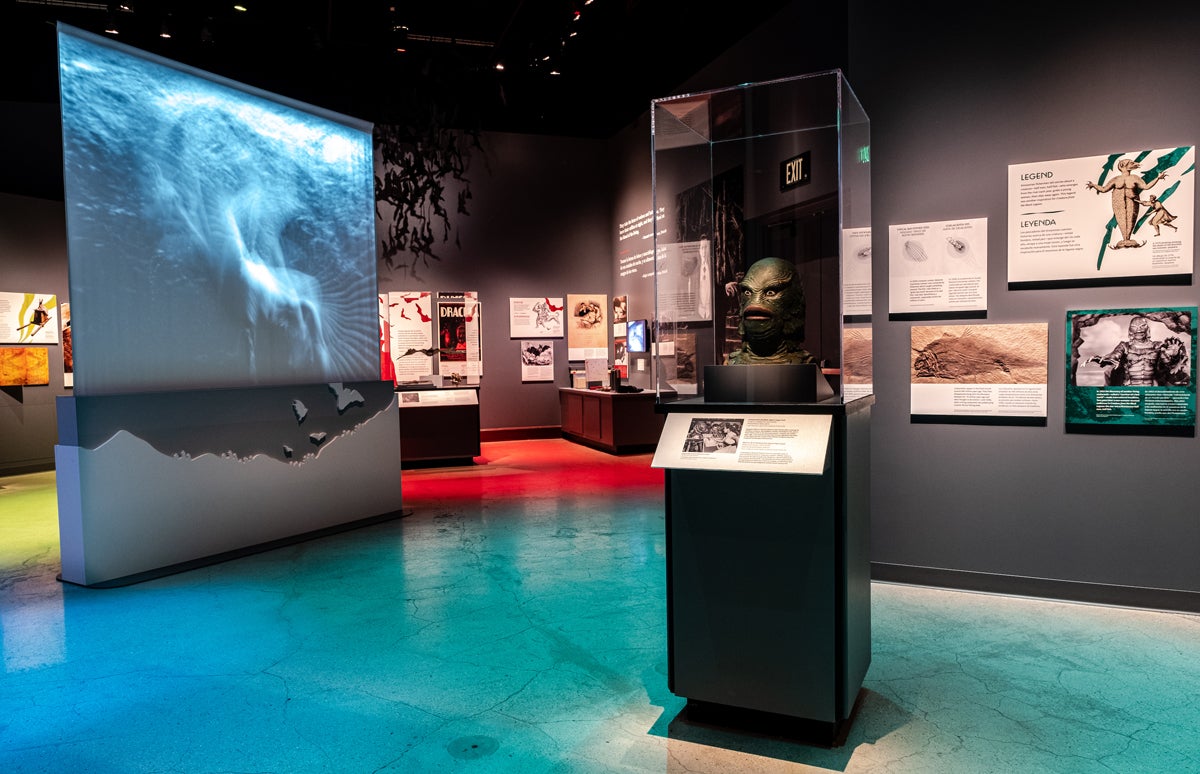
A replica of the mask from 1954’s “Creature from the Black Lagoon” on display in the “Natural History of Horror” exhibit at the Natural History Museum of Los Angeles County. (Photo courtesy of the Natural History Museum of Los Angeles County)
What is about science that inspires so many monster flicks? Karina Wilson, a horror movie historian, wonders if the movies try to answer what might come from pushing the boundaries of our consciousness.
“Horror shows us what happens when we break the rules, when we transgress, when we mix two fluids together that should not be mixed together, when we dig something up that should not be dug up, when we try some kind of life-giving experiment where there should not be life,” Wilson said.
She says science can be scary. “And unregulated science could lead to terrifying new developments. There’s a lot of concern about the genetic modification of humans and the food that we eat right now. And horror is a way of warning people: Do not go here. Do not trespass.”
The genre dates way back in film history. “Le Manoir du Diable” is often considered the world’s first horror movie, made in 1896 by Georges Méliès.
It has a devil that appears and vanishes, and bats and ghosts flying around a creepy old house. At just over three minutes long, it was meant to amuse people, not frighten them.
Many horror shorts were made during the next couple of decades, including the first movie adaptation of “Frankenstein,” made in 1910 by the Edison Co.
“And then the Great War happens, and horror changes completely. Instead of being this kind of carnivalesque entertainment with kind of cutesy dancing skeletons, it becomes a way of sharing nightmares,” Wilson said.
The First World War introduced new weapons for killing. Tens of millions of people died. Many more were patched together and sent home, “often with ruined faces, missing limbs, as well as shattered minds,” Wilson said.
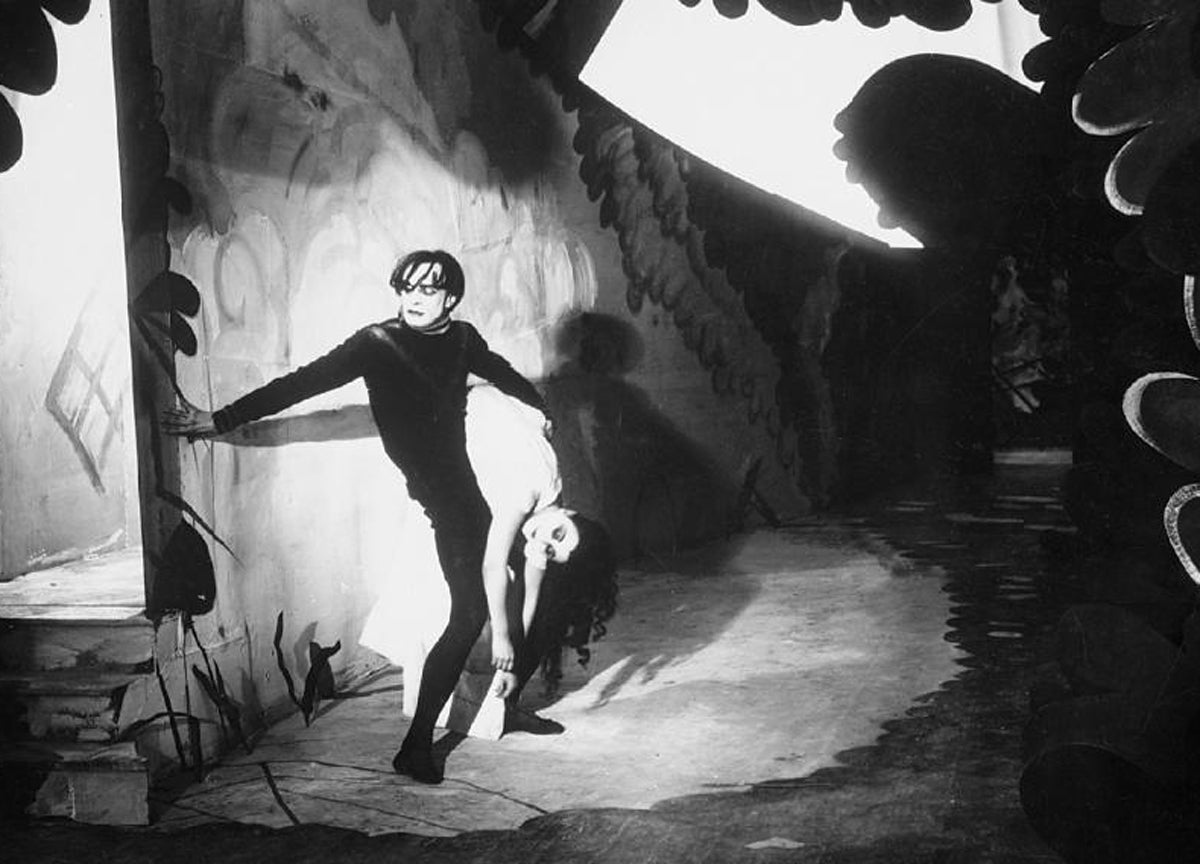
Conrad Veidt And Lil Dagover in “The Cabinet Of Dr. Caligari.” (Decla Film)
Horror movies became a way of coping with widespread trauma. The horrors of the battlefield were told on screen.
“The Cabinet of Dr. Caligari,” made in Germany soon after the war, is about a sleepwalking murderer.
“Many people have suggested it represents the soldiers who came back from the front who were husks of their former selves,” Wilson said. “And it also prefigured the way that Germany would sleepwalk into national socialism and the Nazi regime.”
The 1920s and ’30s saw massive public clashes between science and religion. The 1925 Scopes Monkey Trial in Tennessee argued the teaching of evolution in public schools. And the Hollywood production code enforced moral lessons in movies out of fear of religious-backed government censorship. That fear of science gave rise to a genre of its own: the villainous mad scientist.
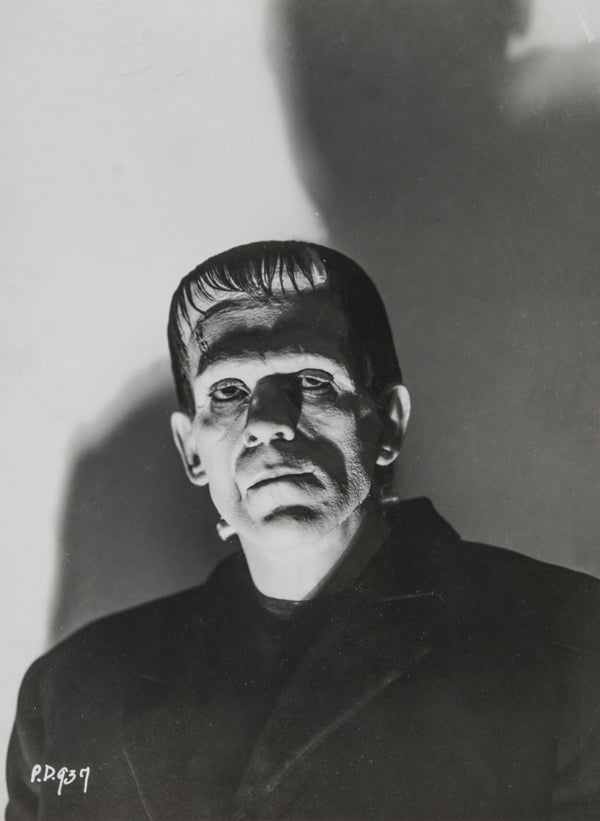
Actor Boris Karloff in his Frankenstein makeup and costume. (Courtesy of Universal Studios Licensing LLC)
“So that’s why Victor Frankenstein is seen as such a hubristic evil figure in many ways. He’s not the hero of the movie. He’s the one who sets that terrible thing into motion and has to deal with it,” Wilson said.
The mad Dr. Frankenstein digs up dead bodies, sews their parts together, and brings them to life using lightning. Mary Shelley, author of Frankenstein, got the idea from actual experiments done in electrification of animals in the late 1700s by Italian physician Luigi Galvani, recognized as the pioneer of bioelectromagnetics. He first observed how electric shocks caused a dead frog’s legs to twitch.
Over a decade later, Galvani’s nephew Giovanni Aldini toured around Europe performing this experiment in public, including with a corpse.
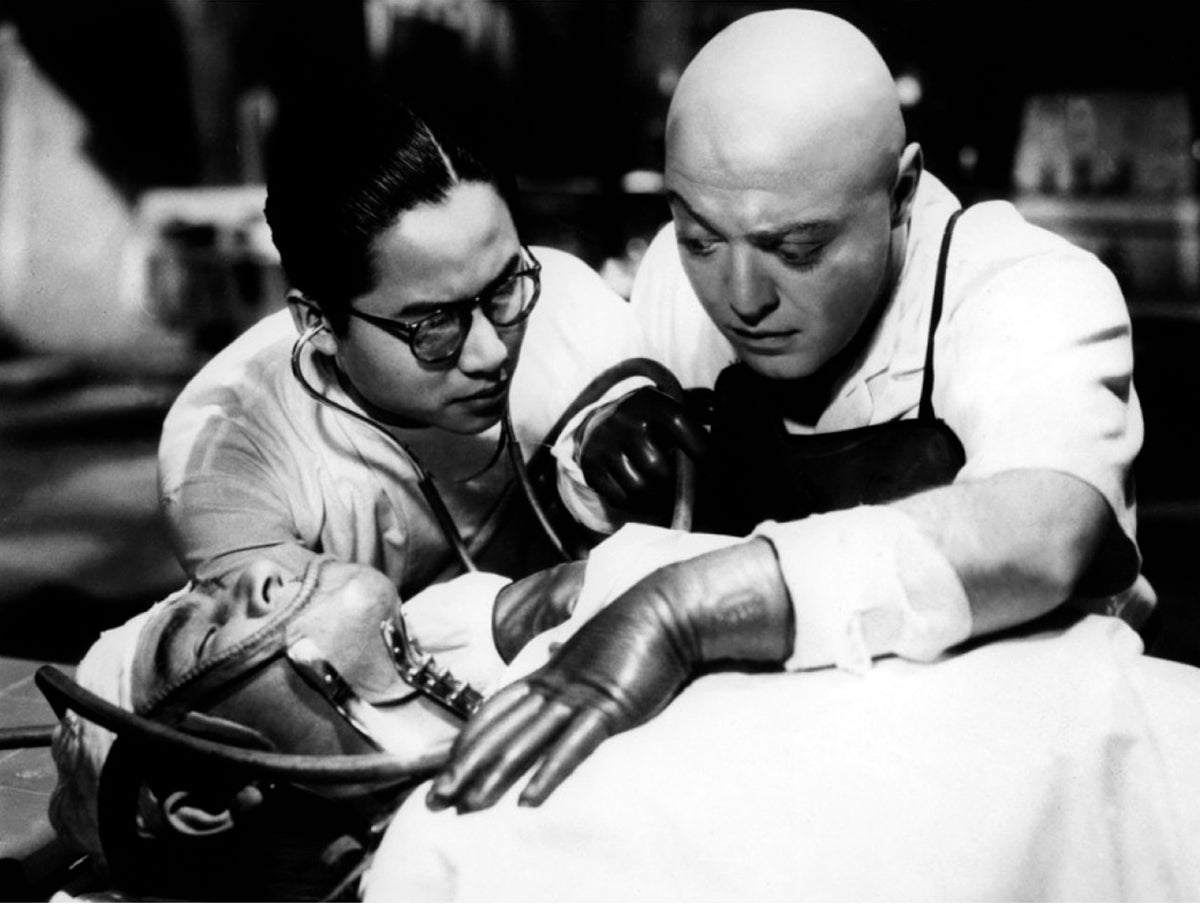
A still from “Mad Love” (MGM)
In “Mad Love” from 1935, a film very evocative of “Frankenstein,” Peter Lorre is a surgeon who replaces the hands of a concert pianist with the hands of a knife-wielding murderer, unleashing monstrous forces.
Mad scientists soon become a sub-genre of their own. And after World War II and the introduction of the atom bomb, scientists became easy film villains.
“So you start getting movies like `Tarantula’ or `Godzilla,’ `The Beast from 20,000 Fathoms,’ these movies about either normal animals or creatures being mutated and turned into monsters by atomic energy or a prehistoric beast being awoken by atomic testing,” said James Kendrick, a professor of film studies at Baylor University who specializes in horror and violence in film.
“The idea that for the first time humankind has developed weapons that could literally wipe out the planet, that was a new concept.”
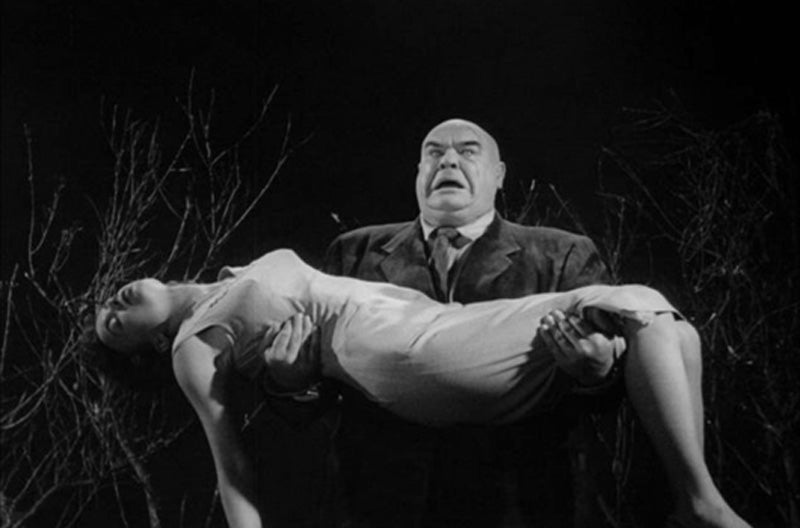
A still from “Plan 9 from Outer Space.” (Valiant Pictures)
Scientists began exploring space, and in Hollywood, aliens took over in “Invasion of the Body Snatchers” and “Plan 9 from Outer Space.”
With every new technological advance, there’s a mad scientist looking to exploit it.
In 1999, the film “Splice” showed a young scientist couple that splice human DNA with animal genes and create a female animal hybrid with killer instincts.
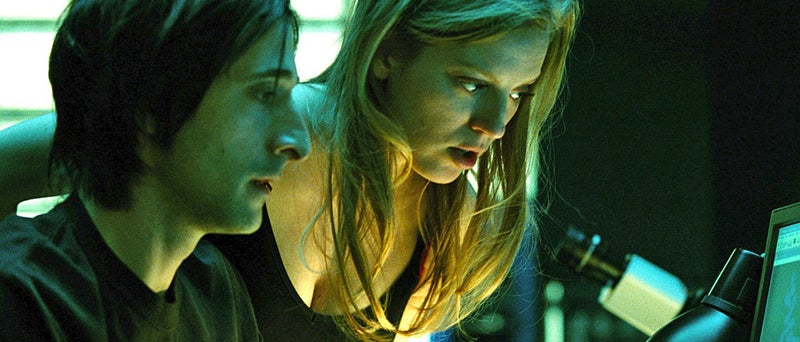
A still from the film “Splice.” (Dark Castle Entertainment)
Kendrick points out that the film is very much an update of H.G. Wells’ science-fiction novel “The Island of Dr. Moreau,” which is also about a mad scientist tampering with nature, in that case one who creates human-like hybrid beings from animals via vivisection.
“It’s still drawing on pervasive fears that have been around for a long time, and this is just the new iteration of it,” Kendrick said.
King Tut’s tomb was discovered in 1922. Soon after, newspapers started reporting on suspicious deaths associated with the discovery.
“When someone fell sick after the tomb was opened, it became this idea that just kind of spread. So newspapers with nothing else to report just kind of came up with this idea of the curse,” Crawford said.
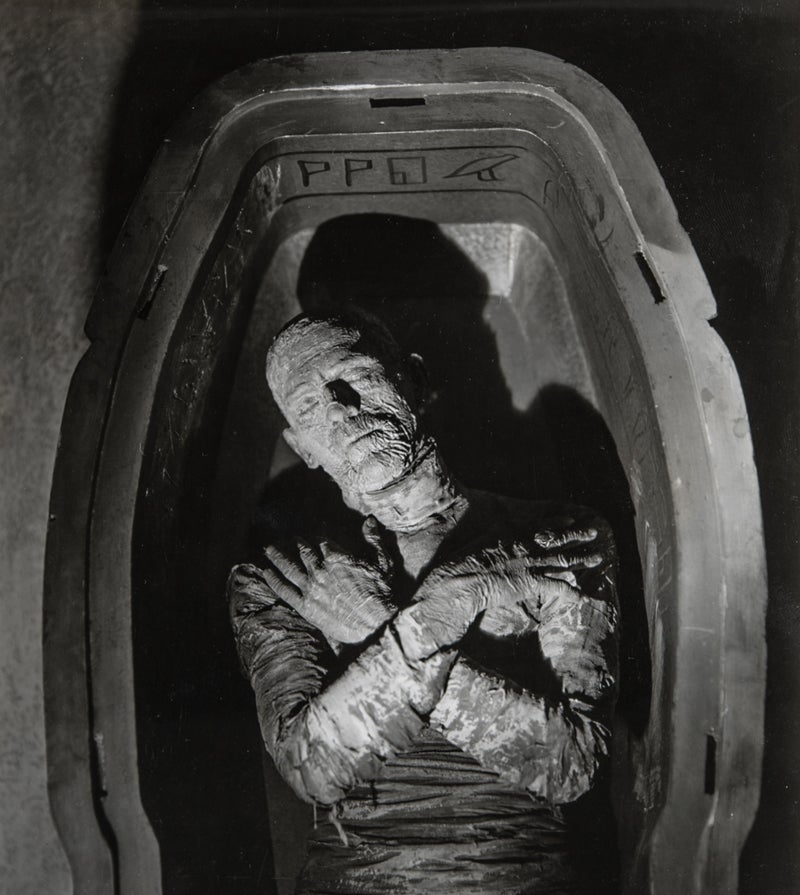
Boris Karloff as The Mummy. (Universal Studios Licensing LLC)
Ten years later, “The Mummy” comes out. In it, scientists find in the tomb a curse written in hieroglyphics. One scientist appeals to the other: “Put it back. Bury it where you found it. You have read the curse. You dare defy it?” The other scientist responds: “In the interest of science, even if I believed in the curse, I go on with my work for the museum.”
The curse brings the mummified remains of an ancient Egyptian priest, played by Boris Karloff, back to life.
The story is fantastical. But horror movies often remind us that before modern medicine, mysterious ailments were often blamed on sinister, unholy forces.
Take Dracula, that handsome creature who charms women and then drinks their blood. He also can’t see his reflection, he hates water and the smell of garlic.
The Spanish-language film “Dracula” (1931) was inspired by diseases blamed on vampire bats such as rabies, which causes victims to foam at the mouth, become averse to water and other strong smells like garlic, and a tendency to become more sexual.
“So someone who contracts rabies, they become over-sexualized. They snarl. They get an aversion to water and strong smells,” Crawford said. “And then the other thing is, frequent carriers of rabies like bats and wolves, those are also the two creatures that Dracula shifts into.”
This fear of contagion became another classic horror movie trope, such as in “28 Days Later,” about a psychological virus let loose from a lab that turns people into raging zombies. It came out in 2003, and the director, Danny Boyle, talked at the time about the widespread fear of infectious diseases.
“There’s something very interesting that happened while we were filming. There were two German scientists who created a totally synthetic polio virus. But they got all the material off the web,” Boyle said in a making-of featurette released at the time of the film.
This was at the time when SARS and anthrax scares were major news stories and foot-and-mouth disease led to the slaughter of millions of cows.
With the coronavirus now a global threat, it’s not hard to see the connection between such fears and the horror movies that result from it.
The history of horror film parallels, in many ways, the history of scientific discovery. We feared the rise of pharmaceutical companies, and a vicious mutant baby attacks in “It’s Alive.” In the movie, the mother has taken contraceptive pills, and a pharmaceutical company executive asks the doctor to destroy the child to keep anyone from discovering the company’s possible role in its creation.
Just as there are mad scientists, there’s another common idea that modern medicine can’t fix some problems. In those cases, said James Kendrick, religious leaders are the champions. Take “The Exorcist,” for example.
“Here, you have this girl who’s possessed by a demon. And for half the movie, you have doctors and researchers and medical professionals trying to explain her symptoms, putting her through MRIs, studying her, but coming up short every single time, because what she is afflicted with goes beyond science, which is why you then have to bring in the exorcist at the end of the movie. And that’s what ultimately solves the problem,” Kendrick said.
As we continue to push the boundaries of artificial intelligence, gene editing, planetary exploration and so on, who knows what monsters we might create — or uncover.
WHYY is the leading public media station serving the Philadelphia region, including Delaware, South Jersey and Pennsylvania. This story originally appeared on WHYY.org.

A collection of interviews, photos, and music videos, featuring local musicians who have stopped by the WITF performance studio to share a little discussion and sound. Produced by WITF’s Joe Ulrich.
The days of journalism’s one-way street of simply producing stories for the public have long been over. Now, it’s time to find better ways to interact with you and ensure we meet your high standards of what a credible media organization should be.